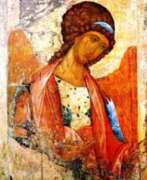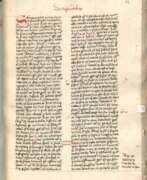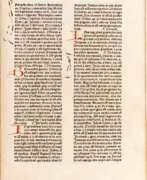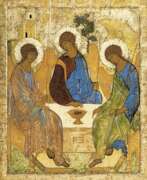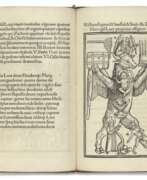Monks 14th century
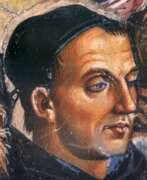

Fra Angelico, a name synonymous with the serenity and purity of Early Renaissance art, was a Dominican friar and Italian painter celebrated for his devout and luminous religious works. Born Guido di Pietro around 1395 in Vicchio, near Florence, he later became known as Fra Giovanni upon joining the Dominican order at Fiesole. His monastic life profoundly influenced his art, reflecting a deep spiritual commitment and a heavenly tranquility. Pope John Paul II recognized his sanctity by beatifying him in 1982, officially bestowing upon him the title "Blessed" and affirming his legacy as a bridge between heaven and earth through his art.
Fra Angelico's technical prowess and innovative approaches to composition and color set new standards in the art world. He was initially trained as an illuminator, which is evident in the delicate details and luminous quality of his works. His art was not confined by his religious duties; instead, his position allowed him to advance the Dominican order's mission through visually compelling narratives that spoke directly to the viewer's soul. His works, including altarpieces and frescoes, are revered for their serene religious attitude and classical influence, embodying the Early Renaissance spirit that sought to harmonize Christian themes with the natural world and human emotion.
Among his most notable contributions are the frescoes at the convent of San Marco in Florence, commissioned by Cosimo de' Medici. These works display Angelico's mastery over perspective and his ability to create a spiritual atmosphere that invites contemplation. The Annunciation, one of his most famous frescoes at San Marco, exemplifies his use of architectural space to frame the sacred narrative, integrating the divine with the everyday. His altarpieces, characterized by their detailed figures and harmonious compositions, were innovative in their unified presentation of sacred stories, moving away from the segmented Gothic style towards a more cohesive and immersive narrative experience.
Fra Angelico's influence extended beyond his lifetime, shaping the trajectory of Renaissance art through his integration of humanistic principles with devout Christian faith. His works are preserved in some of the world's most prestigious museums, including the Museo Diocesano in Cortona, the Uffizi Gallery, and the Museo del Convento di San Marco in Florence, continuing to inspire awe and reverence among viewers.
For collectors and experts in art and antiques, the legacy of Fra Angelico offers a window into the soul of the Renaissance, where beauty and spirituality converge. To stay informed about new product sales and auction events related to this pivotal artist, signing up for updates is a prudent step towards enriching one's collection with works that embody the zenith of religious and artistic expression in the Early Renaissance.
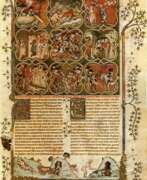

Pierre Bersuire, also known as Petrus Berchorius, was a French medieval writer, Benedictine monk, translator, and encyclopedist.
He was the leading French scholar of his time and friend of Petrarch, author of encyclopedic works on morality, and the first French translator of Titus Livy's History from the Foundation of the City. Very interesting for researchers is Pierre Bersuir's text Ovidius Moralisatus - written in Avignon in 1340 and spreading rapidly, it is a systematic allegorical analysis of the Metamorphoses, aimed at the current situation in church and society.
Bersuire was also an eloquent preacher and author of voluminous sermons.
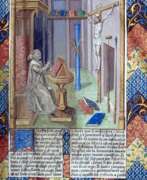

Ludolf of Saxony (German: Ludolf von Sachsen), also known as Ludolf der Kartäuser, was a Roman Catholic theologian and Christian writer of German origin.
The major work of his life was Vita Christi (Life of Christ), also known as Speculum vitae Christi (Mirror of the Life of Christ), completed in 1374. The book is not only a biography of Jesus, but also a history, commentaries by church fathers, and a series of dogmatic and moral reflections, spiritual teachings, meditations, and prayers. This work was very popular in the fourteenth and fifteenth centuries and was first printed in the 1470s.
